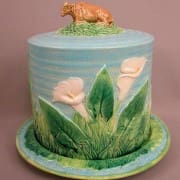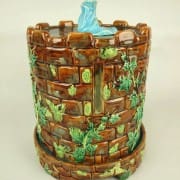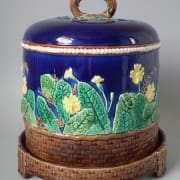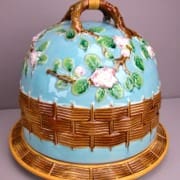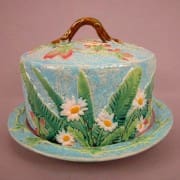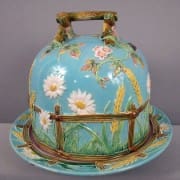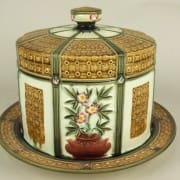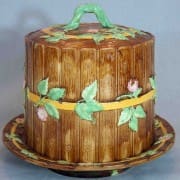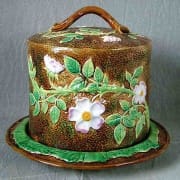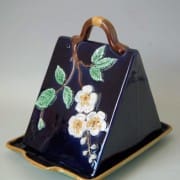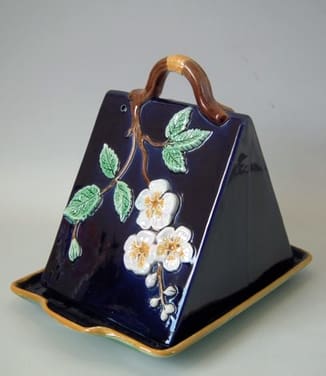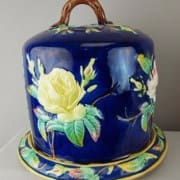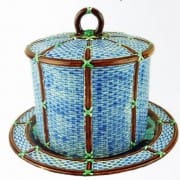Stilton Cheese Keepers
The history of the early production of Blue Stilton cheese is unclear, but the ‘King of English cheeses’ wasn’t actually produced in the village of Stilton. The earliest marketing of Blue Stilton cheese is credited to Cooper Thornhill, landlord of the Bell Inn in Stilton between 1730 and 1759. The inn was located on the Great North Road and was a popular stopping point for coaches traveling north from London to Edinburgh. Thornhill partnered with Leicestershire cheese maker Frances Pawlett and negotiated arrangements which gave the Bell Inn exclusive rights to market Blue Stilton. Travelers spread the word of this fine cheese on returning to London.
Stilton cheese was immensely popular during the 19th century and remains so today. In her book on household management, Mrs. Beeton stated “A celebrated gourmand remarked that a dinner without cheese is like a woman with one eye.” The Victorian dinner party often included the service of cheese accompanying a salad course just prior to dessert. It was important to keep the cheese covered not only to reduce drying, but also to prevent the pungent smell from permeating the room.
The Victorian passion for blue-veined Stilton cheese was matched by the array of dishes used to serve it. Also known as cheese stands, cheese bells and cheese domes, the dishes were produced in an astounding variety of styles. In the early nineteenth century, Wedgwood was the first to produce a tall cylindrical cover with matching stand intended to accommodate an entire round of Stilton cheese. Most majolica cheese keepers are of this style. Less commonly, majolica cheese stands assume a smaller triangular shape designed to store a single wedge.
The domed covers of majolica cheese keepers are typically decorated in relief with basket weaving, foliage, flowers and occasionally birds. Atop the dome is a finial composed of a twig, rope, flower blossom or a finely modeled animal figure. The stand or underplate complements the dome both in design and coloration and has a peripheral rim on its upper surface inside which the dome rests.
Photo Credits:
Strawser Auctions
Live Auctioneers
Ebay images
Madelena Antiques
Antiques from Trilogy
Philppe Meunier & Juan-Alonso Defrocourt
Karmason Library



